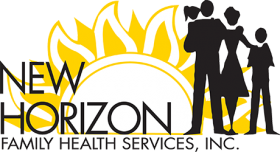
Navigating life with a mental health condition can be tough, and the isolation, blame and secrecy that is often encouraged by stigma can create huge challenges to reaching out, getting needed support and living well. Learning how to avoid and address stigma are important for all of us, especially when you realize stigma’s effects:
- People experiencing mental health conditions often face rejection, bullying and discrimination. This can make their journey to recovery longer and more difficult.
- Mental health conditions are the leading cause of disability across the United States.
- Even though most people can be successfully treated, less than half of the adults in the U.S. who need services and treatment get the help they need.
- The average delay between the onset of symptoms and intervention is 8-10 years.
- Suicide is the second leading cause of death of youth ages 15-24 and the tenth leading cause of death for all Americans.
– See more at: https://www.nami.org/stigmafree#sthash.sV94GLii.dpuf

 October is National Dental Hygiene Month, an effort to celebrate the work dental hygienists do and to help raise awareness on the importance of good oral health.
October is National Dental Hygiene Month, an effort to celebrate the work dental hygienists do and to help raise awareness on the importance of good oral health. Domestic Violence Awareness Month (DVAM) evolved from the “Day of Unity” held in October 1981 and conceived by the National Coalition Against Domestic Violence. The intent was to connect advocates across the nation who were working to end violence against women and their children. The Day of Unity soon became an entire week devoted to a range of activities conducted at the local, state, and national level. The activities conducted were as varied and diverse as the program sponsors but had common themes:
Domestic Violence Awareness Month (DVAM) evolved from the “Day of Unity” held in October 1981 and conceived by the National Coalition Against Domestic Violence. The intent was to connect advocates across the nation who were working to end violence against women and their children. The Day of Unity soon became an entire week devoted to a range of activities conducted at the local, state, and national level. The activities conducted were as varied and diverse as the program sponsors but had common themes: National Breast Cancer Awareness Month (NBCAM) celebrated its 30th anniversary. Since its inception, NBCAM has been at the forefront of promoting awareness of breast cancer issues and has evolved along with the national dialogue on breast cancer. Today, NBCAM recognizes that although many great strides have been made in breast cancer awareness and treatment, there remains much to be accomplished. As NBCAM celebrated its 30th anniversary, they remain dedicated to educating and empowering women to take charge of their own breast health by practicing regular self-breast exams to identify any changes, scheduling regular visits and annual mammograms with their healthcare provider, adhering to prescribed treatment and knowing the facts about recurrence.
National Breast Cancer Awareness Month (NBCAM) celebrated its 30th anniversary. Since its inception, NBCAM has been at the forefront of promoting awareness of breast cancer issues and has evolved along with the national dialogue on breast cancer. Today, NBCAM recognizes that although many great strides have been made in breast cancer awareness and treatment, there remains much to be accomplished. As NBCAM celebrated its 30th anniversary, they remain dedicated to educating and empowering women to take charge of their own breast health by practicing regular self-breast exams to identify any changes, scheduling regular visits and annual mammograms with their healthcare provider, adhering to prescribed treatment and knowing the facts about recurrence.



 rs continue to contribute billions of dollars annually to our country’s fruit and vegetable industry, health centers provide the support they need in order to access health care and overcome many of the health vulnerabilities working in the fields entails.
rs continue to contribute billions of dollars annually to our country’s fruit and vegetable industry, health centers provide the support they need in order to access health care and overcome many of the health vulnerabilities working in the fields entails. 